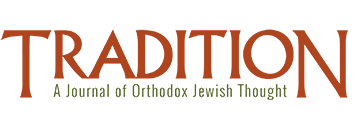TRADITION QUESTIONS: Come Together

 Click here to read about this series.
Click here to read about this series.
What is it?
A May 2024 Jewish Federations of North America survey of Jewish Americans reports that of Jews who were “only somewhat,” “not very” or “not at all engaged” prior to October 7, 40% are now participating in Jewish life. This group—equal to 30% of all Jewish adults and nearly double the proportion of Jews who identify as “deeply-engaged”—represents a dramatic coming together within Jewish life.
A parallel phenomenon of solidarity with Israel, the IDF, and Jews under common antisemitic attack is pulling Jews from Haredi backgrounds closer to other Jews. While political conflict calls attention to draft laws, that should not mask the fact that Haredim volunteering for the IDF and for social support efforts during the current conflict have risen dramatically.
Amidst a protracted war in Gaza, Israelis have expressed concern for Jews on university campuses around the world. In place of rejecting Diaspora concerns, a renewed Jewish solidarity is emerging to respond to a renewed antisemitism.
Why does it matter?
As we experience the period of mourning between 17 Tammuz and 9 Av, we are keenly aware of the Talmud’s explanation for the Second Temple’s destruction: baseless hatred. The events of this past year, from the strife surrounding the Israeli judicial reform to the horrors of the October 7 massacre and its aftermath in the war, have sparked many calls for ahdut—Jewish unity. This is more than simply words. Jews are putting away their differences. We are acting upon a common identity.
Forces pushing the Jewish people together place a unique onus upon Modern Orthodoxy. While Modern Orthodoxy’s efforts to reconcile modernity with traditional Judaism makes it vulnerable when elements of modernity reject Jews and their State, the need to respond collectively privileges Modern Orthodoxy’s perspective of engagement. Secular Jews have begun to recognize the need for Judaism (and some degree of halakhic observance) in the interest of their own survival. Haredim recognize a need to engage general society—if not to transform that world then to together defend ourselves from it. A new Jewish cohesiveness makes Modern Orthodoxy’s core idea essential and inescapable, a self-conscious attempt to reconcile religious Torah Judaism with the values and the assumptions of the secular world.
What questions remain?
What are Orthodox communities doing to participate in and to leverage the “surge” of interest in Judaism among the “unengaged”?
In TRADITION’s Spring 2024 issue, Chaim Saiman and Avital Chizhik-Goldschmidt coined the term “Modern, Orthodox” to refer to a changing America Haredism. In describing the aspirational materialism of this new orthodoxy, they describe the blurring of lines between the “yeshivish balabatish” and the Modern Orthodox. Does this blurring create opportunities to set aside past disputes and to form more partnerships among Orthodox Jews?
What does cross-communal advertising in Jewish newspapers say about a convergence within Orthodox Judaism? Do well-designed graphics for Haredi charity campaigns like Keren Olam HaTorah in The Jewish Link and ads for Dirshu in Jewish Action find corollaries in Modern Orthodox organizations and companies advertising in the pages of Haredi publications? Does such “coming together” reflect a new common Orthodox marketplace of consumers, students and donors?
Rabbi Chaim Strauchler is an Associate Editor of TRADITION.
